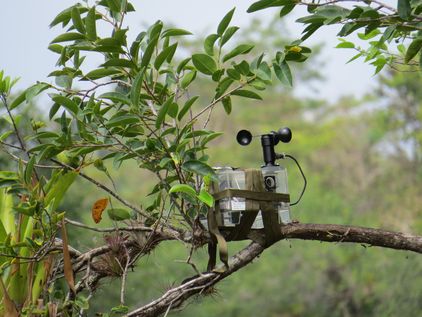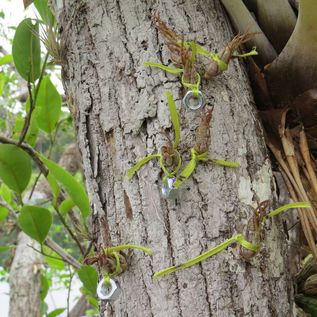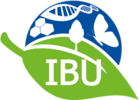Inquiries
Epiphytes and wind
Epiphytes and wind in a changing world
Epiphytes are a key element of tropical forests that are known as a cradle of biodiversity. Highly diverse themselves, epiphytes provide habitat and food for many dependent organisms and play a key role in the water and nutrient cycling of the ecosystem. Structurally depend on their host and growing at the interface between terrestrial vegetation and the atmosphere, they are tightly coupled to the atmosphere and hence much more affected to changes in any climate regime. Therefore, it is surprising how little is known about how wind affects epiphytes. The project links biodiversity research with physics aiming to understand the effect of wind on the epiphytes` vital attachment to their host. This becomes even more important as their natural habitat, the tropical forests, are fragmented by land-use change, exposing them further, which potentiates the negative effects of climate change, e.g. intensification of strong storm events.
With this project we want to identify the bottleneck in the epiphyte-host system, i.e. if wind is able to dislodge epiphytes from their substrate or if the substrate fails first. To do so subprojects were designed that study different aspects of the system:
A descriptive study in several countries in the hurricane belt will identify the percentage of epiphytes dislodged from their host with and without the substrate after a storm. Although there are anecdotal statements in the literature that epiphytes were blown off, there is no quantitative study that identifies the actual bottleneck. This part will be done in cooperation with local colleagues.
Despite the importance for epiphytes to stay attached to their substrate nothing is known about their ability to maintain this attachment. Two subprojects are designed as a collaboration with the wind researchers from the physics institute of Oldenburg University (TWiSt, Prof. Dr. Peinke and Dr. Puczylowski). With a series of experiments in the wind tunnel the force acting on epiphytes under wind stress will be measured and the force necessary to detach epiphytes from their substrate. If wind is unable to strip epiphytes from their substrate only the destruction of the entire system can threaten epiphyte community survival severely.
The experiments in the wind tunnel will be complemented by the investigation of the mechanical properties of the epiphyte roots. To this end, their innate tensile and their attachment strength will be measured and the penetration depth of the root hairs into the substrate quantified. Lastly, it will be experimentally investigated if epiphytes show phenotypic plasticity by enhanced root growth due to a simulated constant wind pressure. In combination the subprojects will identify the bottleneck in the epiphyte-host system and allow an assessment of the consequences of land-use and climate change for a key element of tropical plant diversity.


Selected publications
Tay J, Zotz G & Einzmann HJR. 2022. Thigmomorphogenic responses of epiphytic bromeliads to mechanically-induced stress. Plant Ecology 223: 1-11. doi.org/10.1007/s11258-021-01186-6
Tay J, Kovalev A, Zotz G, Einzmann HJR & Gorb SN. 2022. Holding on or falling off: the attachment mechanism of epiphytic Anthurium obtusum (Engl.) Grayum changes with substrate roughness. American Journal of Botany 109: 874-886. https://doi.org/10.1002/ajb2.16000
Tay J, Zotz G, Gorb SN & Einzmann HJR. 2021. Getting a grip on the adhesion mechanism of epiphytic orchids – evidence from histology and Cryo-SEM. Frontiers in Forests and Global Change – Forest Ecophysiology 4: 764357.
Tay JYL, Zotz G, Puczylowski J & Einzmann H. 2021. Go with the flow: The extent of drag reduction as epiphytic bromeliads reorient in wind. PLoS ONE 16: e0252790. https://doi.org/10.3389/ffgc.2021.764357



